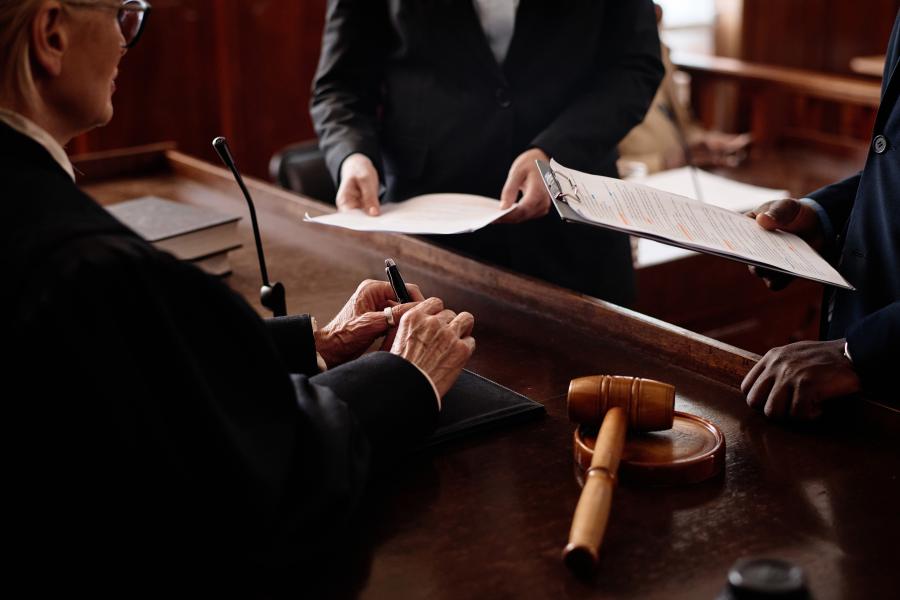Alright, let’s talk about the U.S. Courts of Appeals. Think of it like this: if a referee in your soccer game makes a call you think is totally wrong, you might want to ask another referee to double-check. That’s basically what the Courts of Appeals do—they check to see if the trial court (the first referee) followed the rules and was fair.
What Are the U.S. Courts of Appeals?
The U.S. has 94 trial courts, called district courts, spread across the country. These courts are divided into 12 regions, called circuits, and each region has its own Court of Appeals.
There’s also a 13th special court called the Federal Circuit Court. This one doesn’t cover a region like the others. Instead, it hears certain types of cases, like:
Patent fights (like if someone says, “Hey, they copied my invention!”).
Trade disputes (like two countries arguing over taxes on goods).
So, 12 courts cover regions, and the 13th is for special cases. Cool, right?
Why Are These Courts Important?
You probably think the Supreme Court makes all the big decisions. And they do, but here’s the thing:
Every year, the Supreme Court gets asked to look at about 7,000 cases, but it only hears around 100 to 150 of them.
That means the U.S. Courts of Appeals make the final decision in most cases!
Their rulings affect the laws we live by. For example, they might decide how schools can handle free speech or how businesses have to treat employees.
How Are Appellate Courts Different from Trial Courts?
Trial courts and appellate courts are like two different parts of a story:
Trial Courts (Where Cases Start):
This is where lawyers present evidence and witnesses testify.
A judge or jury listens to everything and decides who wins.
Example:
Let’s say someone sues their neighbor because a tree fell on their car. The trial court will hear the facts, like how tall the tree was and whether it was rotting.
Appellate Courts (Second Look):
No new evidence or witnesses.
No jury.
Judges just look at the trial court’s record (like a replay of the game) to decide if the trial was fair and the law was applied correctly.
Example:
If the neighbor who lost thinks the trial judge used the wrong law about trees, they can appeal to ask the appellate court to fix it.
Who Can Appeal?
Only the losing side in a trial can appeal. Let’s break it down:
Civil Cases:
Either side can appeal. So if a company loses a case about selling faulty phones, they can say, “Wait, we think the trial wasn’t fair!” Or the customer who wins could appeal if they think they should’ve been paid more.Criminal Cases:
Only the person who was accused (the defendant) can appeal. If the government loses and the defendant is found “not guilty,” that’s it. No do-overs for the government.
Example:
If someone is convicted of robbing a bank but thinks the judge didn’t let them present key evidence, they can appeal.
Why Do People Appeal?
There are lots of reasons someone might appeal. Here are the main ones:
Unfair Trial:
The losing side might think the trial wasn’t fair. Maybe the judge made a mistake, like allowing evidence that shouldn’t have been included.
Example:
If someone sued over a car accident and the trial judge didn’t let them show pictures of the crash, they might appeal.Wrong Law Used:
The losing side could argue that the judge applied the wrong law or misunderstood it.
Example:
A landlord might appeal if they lose an eviction case and think the judge used the wrong housing law.Unconstitutional Law:
The losing side might claim the law itself is unfair or goes against the Constitution.
Example:
If a protester is arrested under a city rule about demonstrations, they might argue the rule violates their right to free speech.
Who’s Who in an Appeal?
In an appeal, the people are called something different than in a trial:
Petitioner: This is the person who lost the trial and is asking the appellate court to look at the case.
Respondent: This is the person who won the trial and is defending that decision.
How Do Appeals Work?
Appeals aren’t just about walking into court and talking to the judges. There’s a lot of preparation!
Written Arguments (Briefs):
Each side writes a document called a brief. Don’t let the name fool you—these are usually long and detailed. They explain why the trial court was right or wrong.Oral Arguments:
After the judges read the briefs, they sometimes ask the lawyers to come in and talk about the case. Each side gets a short amount of time to explain their arguments, and the judges can interrupt to ask questions.
Example:
A judge might ask, “If we agree with you, what does that mean for other cases like this one?”
Why Should You Care?
The U.S. Courts of Appeals are super important because they decide most federal cases. These decisions affect laws about schools, jobs, businesses, and even your rights. Even though the Supreme Court gets all the attention, the appellate courts quietly shape our lives every day.
Summary Example: A School Case
Let’s say a student gets suspended for something they said online, and they sue the school, claiming their free speech rights were violated.
Trial Court: Hears the case and decides the school was wrong.
Court of Appeals: The school appeals, saying the trial judge misunderstood the law. The appellate court reviews the case and decides whether to keep or change the trial court’s ruling.
If the appellate court sides with the student, the decision might affect how all schools in that circuit handle free speech cases in the future!


